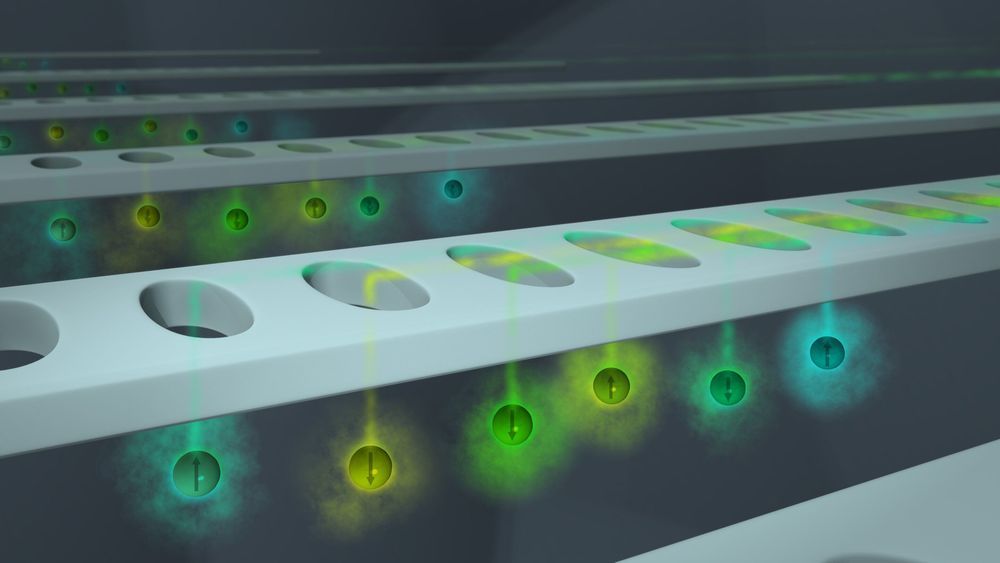When atoms get extremely close, they develop intriguing interactions that could be harnessed to create new generations of computing and other technologies. These interactions in the realm of quantum physics have proven difficult to study experimentally due the basic limitations of optical microscopes.
Now a team of Princeton researchers, led by Jeff Thompson, an assistant professor of electrical engineering, has developed a new way to control and measure atoms that are so close together no optical lens can distinguish them.
Described in an article published Oct. 30 in the journal Science, their method excites closely-spaced erbium atoms in a crystal using a finely tuned laser in a nanometer-scale optical circuit. The researchers take advantage of the fact that each atom responds to slightly different frequencies, or colors, of laser light, allowing the researchers to resolve and control multiple atoms, without relying on their spatial information.
